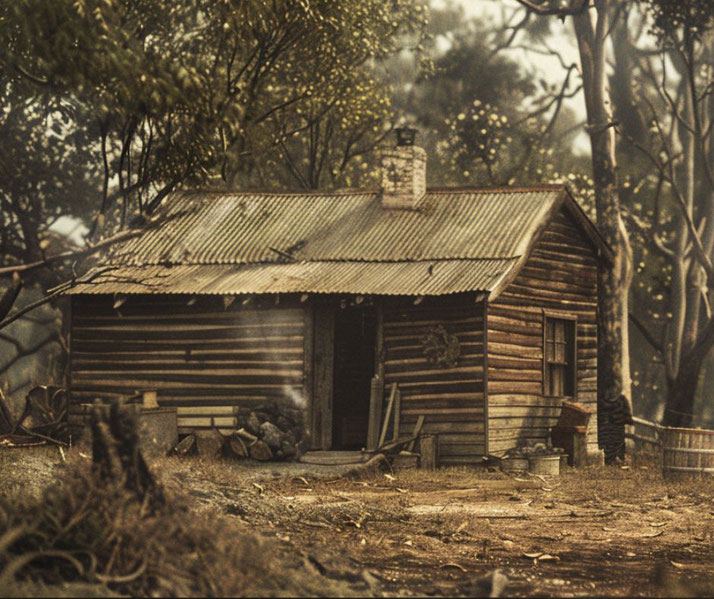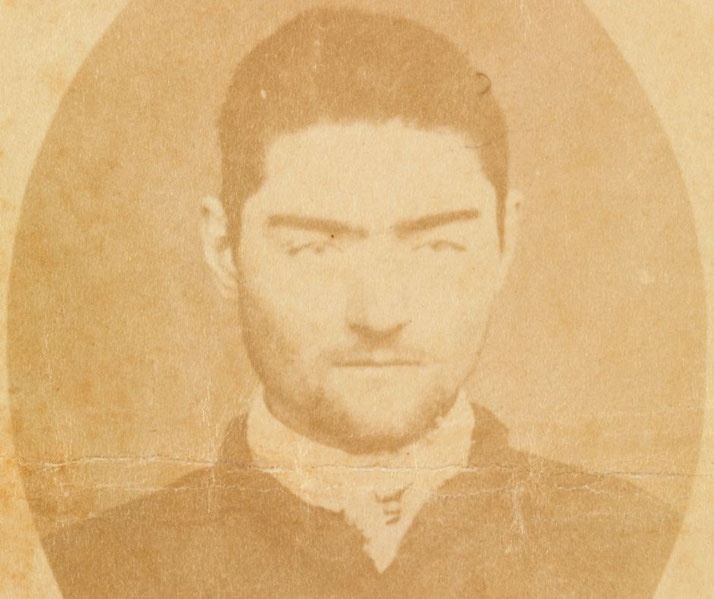Was Ned Kelly, Australia's most famous bushranger, a hero or villain?

Ned Kelly is one of the most infamous criminals in Australian history. His life has been made into movies, books, and even a TV show.
But why is Ned Kelly so famous?
And what led him to become one of Australia's most wanted men?
Early Life
Ned Kelly was born in the town of Beveridge, Victoria, in 1854.
His father, John 'Red' Kelly, was convicted of stealing two pigs in 1841 in Tipperary, Ireland, before being transported to Van Diemen's Land (now Tasmania).
Ned's mother, Ellen Quinn, was also Irish. She married John Kelly after he had served his time and was working on her father's farm in Victoria.
After their marriage, the couple lived in a small hut on a plot of land that they rented from a man named James Quinn.
Life was hard for the Kellys, as they didn't earn much from their land. As they raised their small children. they sometime had to go without food.
Red Kelly died when Ned was 12 years old. This left the young teenager as the oldest male in the household.
Around this time, Ned spent some time with a bushranger known as Harry Power, who taught him how to survive in the bush and use a gun.
In 1869, at the age of 15, Ned was arrested for allegedly assaulting Ah Fook, a Chinese pig farmer, which was one of his first recorded encounters with the law.
Then, in 1871 Ned received a three-year prison sentence for receiving a stolen horse.
This left Ned, his sister, and two younger brothers to fend for themselves. After leaving prison, Ned tried to help his family out financially and started working as a fence-mender and later as a bullocky.

The Fitzpatrick Incident
In April 1878, an event unfolded at the Kelly home that would change Ned's life forever.
It started when a police officer named Fitzpatrick arrived at the Kelly house to arrest Ned's brother Dan for stealing some horses.
When Fitzpatrick tried to arrest Ned, a fight broke out and Ellen, Ned's mother, hit Fitzpatrick over the head with a fire shovel.
It was claimed that Ned then shot a pistol at him, injuring the police officer's wrist.
After the altercation, Fitzpatrick managed to escape and rode off to get help.
The Kelly family, however, told a different story. They claimed that Fitzpatrick, who had a reputation for being dishonest and had allegedly made advances towards Ned's sister, Kate, had fabricated the entire incident.
According to their account, Fitzpatrick arrived at the Kelly home drunk and attempted to arrest Dan without a warrant.
A scuffle ensued, during which Fitzpatrick injured himself, and the Kellys insisted that no shots were fired.
When a posse of policemen came back to the Kelly house to arrest Dan and Ned, the two men were not there.
So, they arrested Ellen instead. She was charged with aiding attempted murder and was sentenced to three years hard labour.
Stringybark Creek
The Kelly Gang was officially formed in 1878 after the Fitzpatrick Incident. It consisted of Ned Kelly, his brother Dan Kelly, Joe Byrne, and Steve Hart.
In October 1878, the Kelly Gang went into the Wombat Ranges to hide from the police.
Four police were sent into the bush to find and arrest the men.
Ned and Dan found the police officers' camp at Stringybark Creek and a shoot-out ensued.
During the gunfight, three policemen were killed: Constables Lonigan, Scanlan, and Kennedy.
Constable McIntyre was the only one who escaped.
The killing of a policeman now made Ned Kelly a wanted man and there was now an £800 reward was offered for the capture of Ned and his gang.

The Euroa Raid
The Kelly gang's next major crime was the robbery of the National Bank in Euroa.
On December 10, 1878, Ned and his gang rode into town and held up the bank.
They stole £2000 in cash and a large quantity of gold sovereigns. They also took hostages, including the bank manager, his family, and some customers.

The Jerilderie Raid
The Kelly gang's next major crime was the robbery of the bank in Jerilderie. On February 10, 1879, Ned and his gang rode into town and held up the bank.
The gang took over the town for two days by impersonating policemen. Again, they robbed the local bank of over £2,000 and used the opportunity to spread their message.
During the hold-up, Ned Kelly produced a letter that he had written which was to be made public if anything happened to him.
The letter detailed the grievances of the Kelly gang and explained their actions. It was known as the Jerilderie Letter.
In it, Ned stated that the Victorian police were "a disgrace to their country".
After the Jerilderie raid, Ned and his gang went into hiding again. They avoided capture for another six months, but their time was running out.
The government had increased the reward to £8,000 for information leading to the capture of Ned Kelly and his gang.
This increased amount of money and it meant that there were now a lot of people looking for them.
The Glenrowan Siege
By June 1880, the Kelly gang were the most wanted men in Australia, and as such, a large force of policemen had been sent to Victoria to find them.
The final confrontation between the Kelly Gang and the police took place in the small town of Glenrowan, Victoria, on June 28, 1880.
Ned Kelly had devised a bold plan to derail a train carrying police reinforcements, intending to spark a larger uprising against the authorities.
The gang took over the Glenrowan Inn, holding around 60 hostages, and waited for the train to arrive.
Unbeknownst to the gang, their plan to derail the train was foiled when a schoolteacher named Thomas Curnow, who had been released by the gang, warned the approaching train of the danger.
Ned and his gang retreated to the Glenrowan Hotel where they had taken hostages.
The police surrounded the hotel and placed it under siege.
A shoot-out began, during which, Ned Kelly emerged from the building wearing a full suit of iron armour that he had made himself from hammering plough blades flat and nailing them together.
It weighed about 44 kilograms, but despite the armor's ability to deflect bullets, it did not cover his entire body, and his legs were unprotected.
Finally, the police set fire to the hotel and Dan Kelly and Steve Hart died in the flames that consumed the hotel.
Joe Byrne, however, was killed in the shoot-out during the siege. Ned was shot several times but still managed to kill three policemen before he was finally captured.
Trial and Death
Ned Kelly was transported to Melbourne, where he stood trial for the murder of Constable Thomas Lonigan at Stringybark Creek.
He was ultimately found guilty of murder, despite his claims that he only killed Constable Lonigan in self-defense.
Ned was sentenced to death and hanged at Old Melbourne Gaol on November 11th, 1880.
He was just 25 years old.
Following Ned's death, a Royal Commission was established in 1881 to investigate the conduct of the Victorian Police, highlighting systemic issues and leading to significant reforms within the force.
Therefore, to some degree, Ned Kelly's concerns about police corruption were vindicated.
Today, Ned Kelly is considered a folk hero by many Australians and his story has been retold many times in books, movies, and even songs.
The iconic 1906 film 'The Story of the Kelly Gang,' is even considered the world's first feature-length narrative film.

What do you need help with?
Download ready-to-use digital learning resources
Copyright © History Skills 2014-2024.
Contact via email
With the exception of links to external sites, some historical sources and extracts from specific publications, all content on this website is copyrighted by History Skills. This content may not be copied, republished or redistributed without written permission from the website creator. Please use the Contact page to obtain relevant permission.





